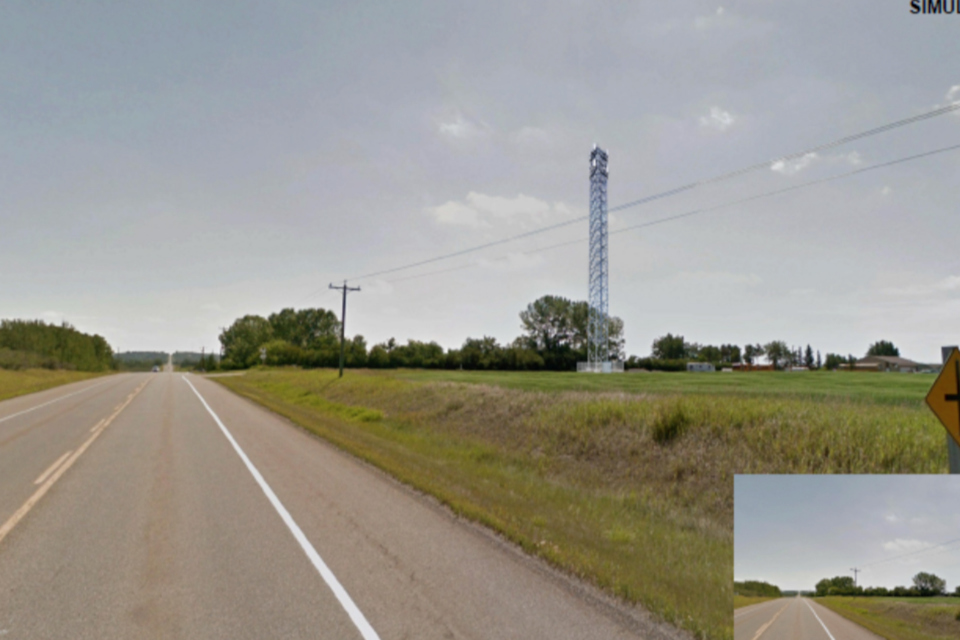A proposed telecommunication tower in Springbank was rejected by Rocky View County (RVC) councillors last month, but that doesn’t necessarily mean the project is dead in the water.
Rogers Communications can take council’s decision to RVC's Subdivision and Development Appeal Board for further consideration, but it’s still unclear what the telecommunication giant’s next step will be.
“We recognize it's not the County's decision at the end of the day, it's a decision made by Transport Canada,” said Ian Schmidt, the vice-president of the Springbank Community Association (SCA). “Typically, applicants will prefer to push locations forward that have the approval of the municipalities, but that isn't necessarily the case,”
Rogers recently proposed a 45-metre-high telecommunications tower in order to improve wireless services in central Springbank, but some feedback from area residents indicated they don’t have a problem with the current cell service and don’t think an additional tower is necessary.
The proposed location for the tower is an agricultural parcel at the intersection of Springbank Road and Range Road 32. Thirty-five letters of concern were sent to the County about the proposal, while only two letters of support were received.
If the proposal does come before RVC’s appeal board, Schmidt said he hopes Springbank residents present their case and make their stance known. The SCA would present information resulting from a survey they conducted in the fall that demonstrated an overwhelming opposition against the tower proposal, Schmidt added.
“I think this [tower] is something that requires a revisit to the drawing board by the applicant and the community to see what other locations might be more appropriate,” Schmidt said.
While Schmidt has not noticed any cell service issues, he has heard about issues regarding slow internet service in the area. The problem with this tower is that it might not improve service unless people are already subscribed to Rogers, according to Schmidt.
“Although it's intended to be a tower with a fair amount of capacity for other carriers to bolt on their satellite dishes, that's a double-edged sword. Once dishes are bolted on every side of it, it becomes more of a violation of people's viewscapes,” Schmidt said.
He added that better cell or internet service is important, but that finding a location consistent with the County's policies related to telecommunication towers is vital.
“The policy is quite descriptive related to the importance of preserving the landscape and preserving views to landscape features. Obviously the Rocky Mountains would be a very important landscape feature, therefore anyone on the east [side] of this site would have concerns about it,” Schmidt said.
James McCorquodale, the telecommunications program manager at LandSolutions LP, presented Roger’s proposal at RVC’s Municipal Planning Commission meeting on Dec. 15, 2021. During the presentation, he said the tower would relieve other towers of high traffic and enhance coverage in the area.
The site was selected based on the area with the most “dead” service zones and the requirement of a higher elevation to maintain a clear line of sight to other towers, according to McCorquodale.
Almost all opposition to the tower location came from residents east of the proposed tower location, and the main issue for them is their viewscape, he stated, adding property impacts of the viewscape issue are negligible compared to the value of wireless service.
RVC Mayor and Springbank-area council representative Don Kochan, who voted against the proposal, said if the cell tower proposal is rejected by the County's Subdivision and Development Appeal Board, Rogers can identify a new location or go to the Federal Ministry for another ruling.
He added the Federal Minister of Industry is the approving authority for this project, but they are required to consult with the public prior to a decision as well.
The survey conducted by the SCA last fall showed that 72.9 per cent of respondents did not support the cell tower proposal, while 15.3 per cent did support its construction.
The survey received 145 responses, of which 60 per cent stated they drive by the proposed location of the tower more than five times per week and 12.4 per cent stated they drive past the location fewer than five times per month. Meanwhile, 83.2 per cent of respondents said they live anywhere from less than a mile to two miles away from the location.
“My house is less than 1,000 feet from this proposed tower,” wrote one respondent. “I am concerned for the health consequences of my family and neighbours from this tower.”
Out of 145 respondents, 27 people did not have health concerns related to the tower.
In terms of aesthetics, 128 respondents ranged from somewhat to extremely concerned, and the majority were concerned about lighting required for the tower.
“Our concerns expressed previously have been ignored,” one respondent wrote. “There are other very appropriate locations other than in the middle of a beautiful acreage residential setting! Our family has never had a problem in 25 years with cell coverage.”
Despite the opposition, some residents pointed out the area is in need of more reliable cell service by Rogers and Telus.
“We need better internet above all else. Our area has the slowest internet in Canada,” one respondent wrote.
Another person wrote that pending something being done about the aesthetics, they would be supportive of improving the region’s cell service.
Many responses pointed out that public consultation for the cell tower proposal was not adequate.



